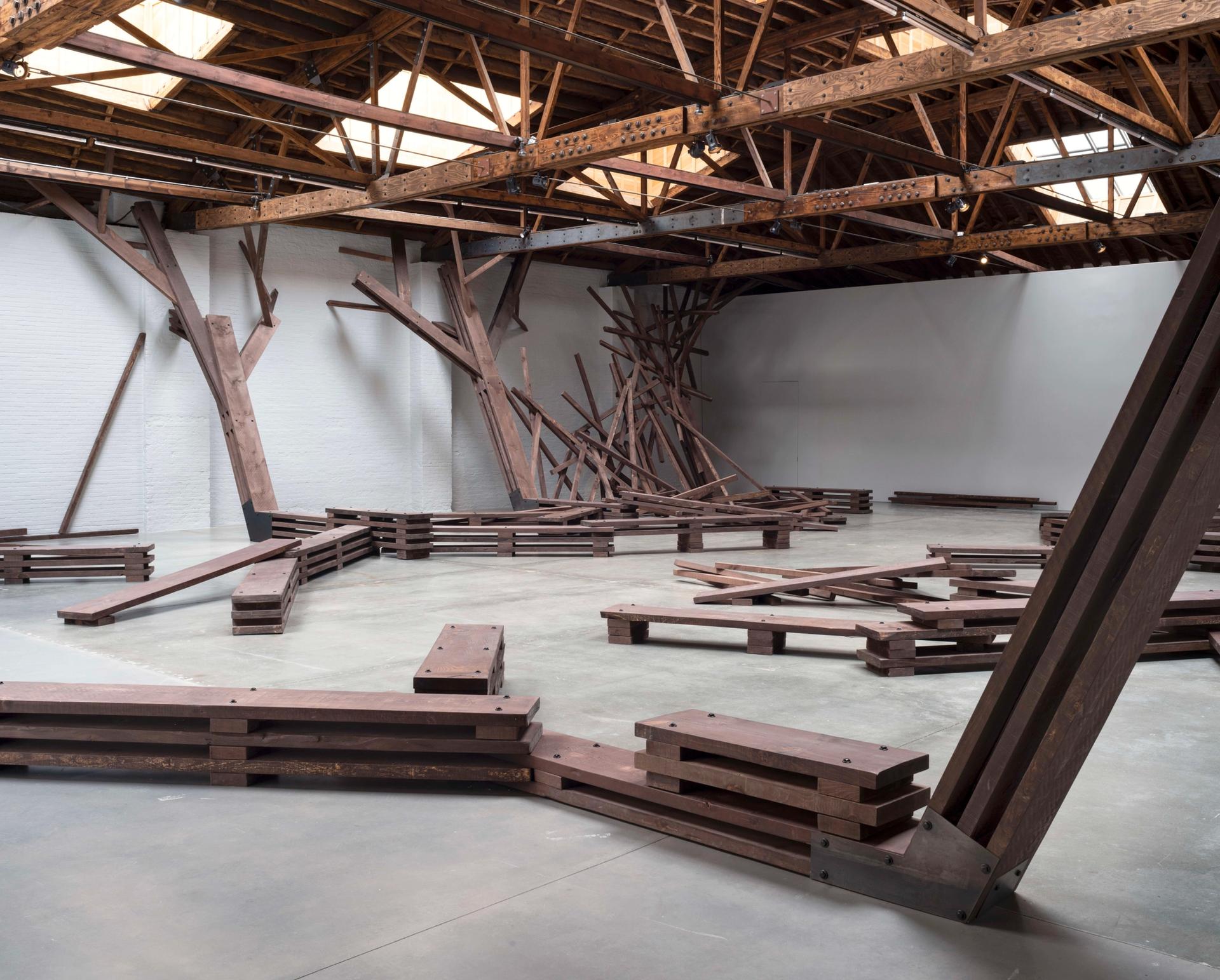The Dia Art Foundation has commissioned the American artist Camille Norment for the second exhibition in its renovated space in Chelsea, which reopened in 2021 after a two-year, $20m revamp with a renewed focus on championing under-represented artists working outside of traditional confines.
The site-specific exhibition titled Plexus (2022) comprises two sculptural installations united through a minimal sonic composition across Dia Chelsea’s two contiguous and cavernous galleries on West 22nd Street. The work aims to create a “vibrational catharsis”, the artist tells The Art Newspaper.
One space houses a brass vessel resembling an inverted bell, with a teardrop-shaped sculpture hanging from above that contains a built-in speaker, which amplifies the sound of bodies moving through the space via a feedback loop facilitated with four live microphones suspended from the ceiling. As visitors near the sculpture, the feedback becomes audible, reacting to their presence.

Camille Norment, Untitled (2022). Installation view, Dia Chelsea, New York. Bill Jacobson Studio, New York. Courtesy Dia Art Foundation.
Another gallery is filled with an intoxicating looped recording of throat singing and other sounds that Norment recorded with 12 vocalists. The gallery is flanked by large-scale wooden sculptures made from fallen trees. Juxtaposed with the industrial space’s wooden ceiling beams, the towering, spectral sculptures—piled abstractedly throughout the space—evoke the remnants of a beached and battered vessel. The works invite a moment of meditation; visitors are encouraged to recline on them and immerse themselves in the room’s aural composition, which reverberate the sculptures as it swells the space.
“Looking across these galleries, I was immediately reminded of a capsized ship,” Norment says. “I wanted to consider the architecture of the space, and also the fact that Dia used to be a shoreline, then a landfill. The work aims to bring up ideas around human migration, and the relationship between humans and the environment.”
Norment, who is based in Oslo and took over the Nordic Pavilion at the 2015 Venice Biennial, began working with Dia in 2019, when she held an artists-on-artists lecture on the late sonic artist Max Neuhaus. “I had been working with sound, with similar ideas around the bell, the sine wave and feedback, and like Neuhaus was looking into feedback in relation to its social possibilities, or the idea of feedback as a democratising space,” Norment says.

Camille Norment, Untitled (2022). Installation view, Dia Chelsea, New York. Bill Jacobson Studio, New York. Courtesy Dia Art Foundation.
She adds, “Too much feedback, like what we see with the news and social media, becomes an echo chamber. You have to have negotiation, through an active dance and delicate balance between control and openness.”
The Dia curator Jordan Carter, who organised the public programming for the exhibition, says the show references the maritime history of the Chelsea site, prompting contemplation of the relationship between humans and industrialism, but that ultimately it is “very much an experiential installation that invites people to make their own connections”.
The show was curated by Kelly Kivland, the former curator of the Dia Art Foundation, who was appointed the chief curator of the Wexner Center for the Arts last year, in collaboration with Heidie Giannotti, Dia’s director of exhibition design, Randy Gibson, the manager of exhibition technology, and the curatorial assistant Zuna Maza.
The exhibition builds on Dia’s recent efforts to reassess its curatorial framework by supporting the work of artists who align with its storied conceptual philosophy but broaden gender and race representation in the collection. The foundation reopened in Chelsea with a conceptual film and light sculptures by Lucy Raven; after Norment, it will present an exhibition by the Greek artist Chryssa followed by the Colombian sculptor Delcy Morelos.
• Camille Norment: Plexus, Dia Chelsea, 3 March 2022-29 January 2023


